BUCKET LIST FOR THIS REGION
- Visit the Popa Falls
- Take a boat cruise on the mighty Zambezi
- Catch a tigerfish
- See a fish eagle
- Go for a game drive in one of the parks
- Buy a traditional basket
- Go for a ride on a mokoro
The Kavango East and Kavango West Regions
The lure of the area is its wild and untamed quality, which gives visitors a peek into authentic African lifestyles. Perennial rivers and expansive floodplains, lush sub-tropical vegetation, an abundance of game and birds, and scattered settlements are a complete change of scenery from the rest of the Namibian landscape. The 575-kilometre tarred Trans-Caprivi Highway provides easy access to the region.
The Okavango River and its broad floodplains make the Kavango East and Kavango West regions considerably greener than the rest of Namibia. The river forms a natural boundary between Namibia and Angola for more than 400 km and is the lifeline to the Kavango people, who make a living from fishing, tending cattle and cultivating sorghum, millet and maize.
RUNDU
The main town in the Kavango East Region is Rundu, situated on the banks of the Okavango River. This is the home of Namibia’s well-known Kavango woodcarvers. Their ancient craft, handed down over generations, is a flourishing industry today. Wood carvings are made and offered for sale at the Mbungura Woodcraft Cooperative, which has its main workshop and office in the town. Another worthwhile stop is the Rundu Open Market to taste some local fare and experience the unique culture of the region. FlyNamibia offers several flights a week to Rundu from Windhoek. Thirty kilometres east of Rundu is the Sambyu Museum, an art and crafts facility displaying woodcarvings and traditional crafts from the Kavango Region and southern Angola, and stone tools found locally.
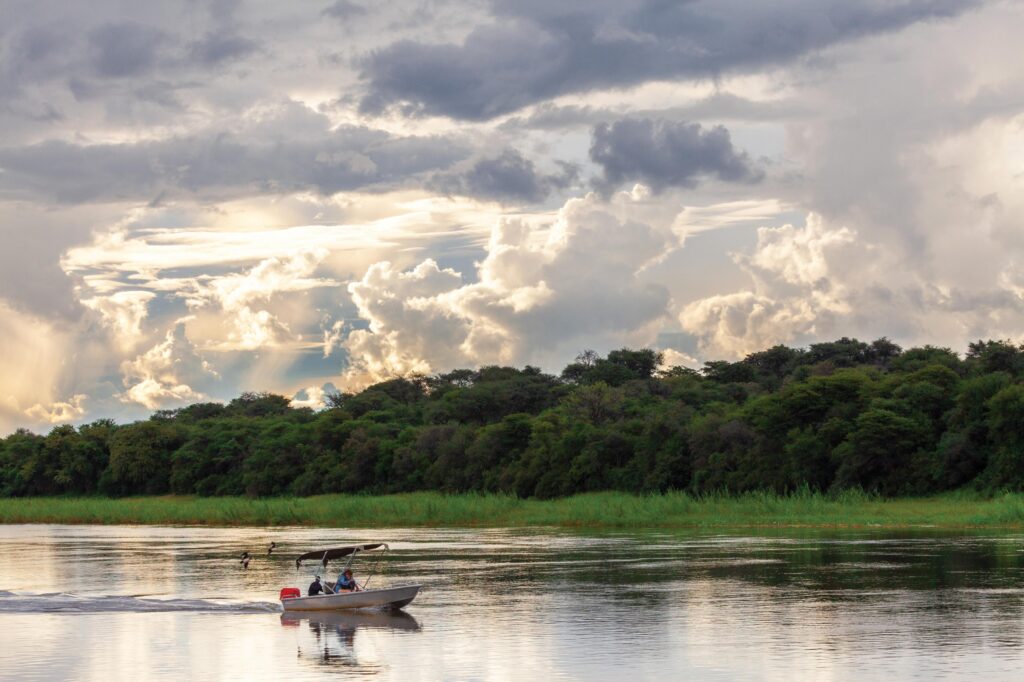
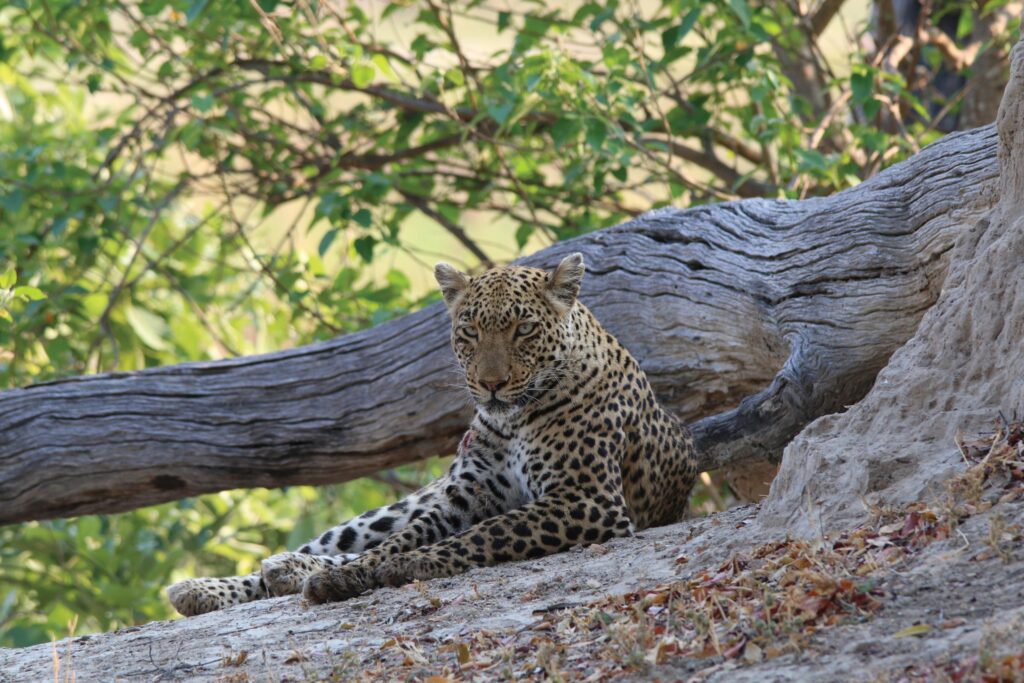
MANGETTI NATIONAL PARK
Previously managed as a game camp for breeding rare and endangered species such as black and white rhino, the Mangetti conservation area was proclaimed as the Mangetti National Park in 2008 to protect its wildlife and vegetation and provide tangible socioeconomic benefits to local communities through careful tourism development.
Situated some 100 km southwest of Rundu in the Kavango West Region, the park extends over 420 km² and is managed jointly by the Uukwangali Traditional Authority and the MEFT. Animals seen here include eland, blue wildebeest, African wild dog, leopard and hyaena. Additional species such as common impala, gemsbok, kudu, giraffe and Burchell’s zebra were translocated through the project Enhancing Wildlife- based Economy in Rural Areas from Etosha National Park and the private sector.
The Zambezi Region
Formerly referred to as the Caprivi, the Zambezi Region is a fertile wilderness of riverine forests, floodplains, swamps and open woodland created by a complex network of rivers and relatively high summer rainfall. For freshwater angling enthusiasts and canoeists, Zambezi offers much excitement and challenge. Well over 400 of Namibia’s bird species occur in this part of the country, and the region is an ideal retreat for bird-watchers, nature lovers and specialist travellers. It is also of interest to scientists studying the wetlands system and its flora and fauna.
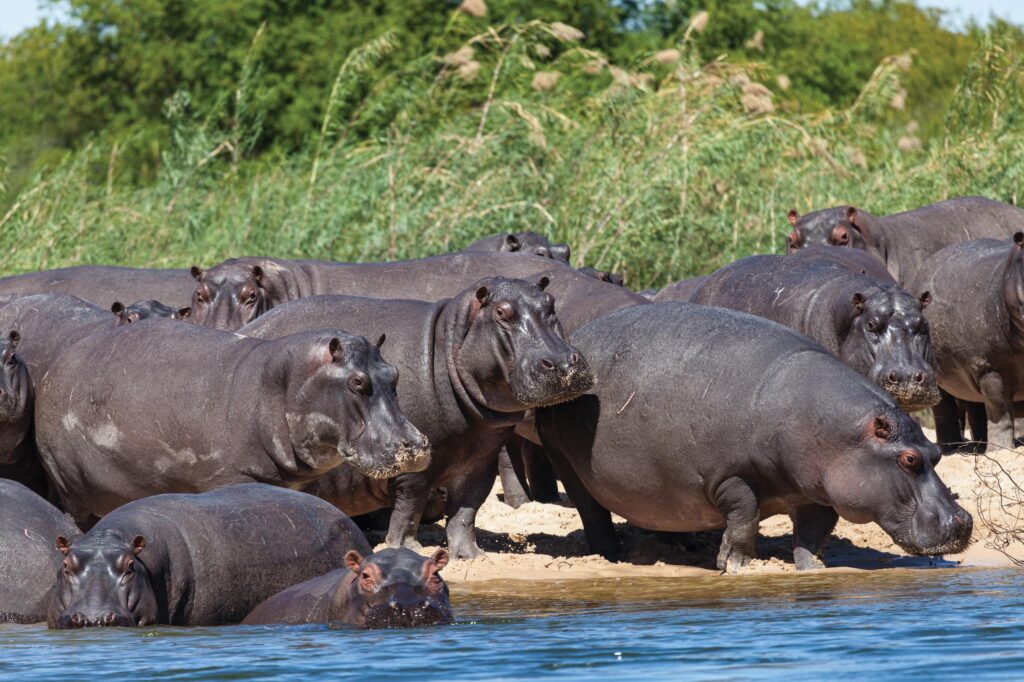
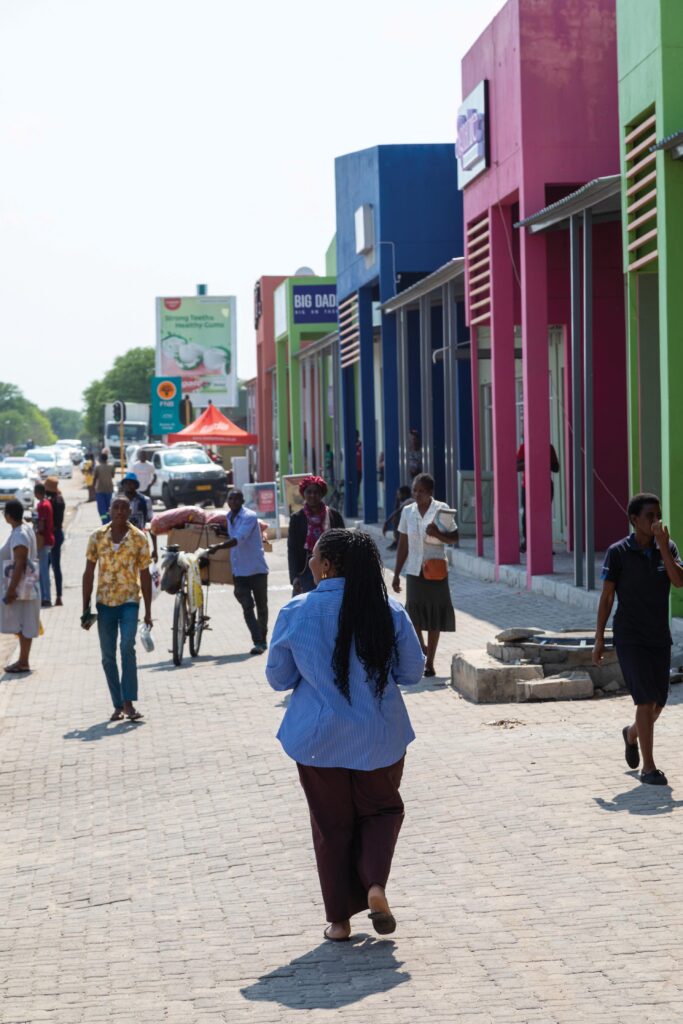
In pre-colonial times know as Itenga, Zambezi was ruled by the Lozi kings until it became part of the British Protectorate of Bechuanaland, today’s Botswana. In 1890, at the Berlin Conference, Germany acquired the territory, named it after German Chancellor Count Georg Leo von Caprivi, and added it to German South West Africa. The capital of the Caprivi was Schuckmannsburg (renamed Luhonono in 2013) until 1935, when it was moved to Katima Mulilo, a name that means ‘put out the fire’. Katima Mulilo has since become a busy tourist centre and gateway to Victoria Falls in Zimbabwe and Chobe National Park in Botswana.
Travelling from Katima Mulilo on the B8, you cross into Botswana at the Ngoma border post. The road now traverses Chobe National Park to Kasane, the springboard to Impalila Island where Namibia borders on Botswana, Zambia and Zimbabwe. The link for these attractions is the 575-kilometre TransCaprivi Highway, a wide, tarred road that has replaced the dusty gravel tracks of the past. The route runs through a region of which one third is a floodplain. Providing access to three state-protected game reserves, it lies in the geographic heart of the Kavango-Zambezi (KaZa) Transfrontier Conservation Area. Read more on KAZA further down in this section.
KATIMA MULILO
The largest town in Zambezi, Katima Mulilo, lies on the banks of the Zambezi River, at the crossroads of Namibia, Zambia, Zimbabwe, Botswana and Angola. It beats with the pulse of Africa and is a microcosm of Zambezi, a place where seven different languages and many more dialects are spoken, with traditional villages bordering the town and open markets resonating with more modern conveniences.
Dirt tracks and freshly paved roads in the centre of Katima Mulilo lead you to a mixture of old and new shops, banks and small businesses. An interesting feature of the town is an ancient baobab which once housed a flush toilet in its hollow trunk. A large, vibrant African market in the centre of Katima Mulilo provides a glimpse into the daily lives of Namibians in this lively town.
Zambezi pottery and baskets are noted for their distinctive beauty and symmetry. The fine workmanship of the Zambezians can be seen in the crafts offered for sale at several outlets, including the Katima Craft Centre next to the open market in Katima Mulilo; the Ngoma Crafts Centre near the Ngoma border post; Mashi Crafts at Kongola; and at the Lizauli Traditional Village, where a programme of traditional music and dance gives visitors an insight into Zambezian culture.
The Green Basket Café is a great place for a meal, and it also provides information on what to see and do in the area. If you’re looking for entertainment on the banks of the Zambezi River, Bezi Bar is a favoured hangout for locals and visitors alike.
Katima Mulilo Airport is situated 20 km outside the town within two hours’ drive from Victoria Falls and not more than four hours’ drive from the Okavango Delta in Botswana. FlyNamibia offers several flights a week between Windhoek and Katima Mulilo.
Parks in Zambezi
Nestled in the heart of southern Africa, the Zambezi region of Namibia is a haven for wildlife enthusiasts and nature lovers alike. Known for its lush landscapes and diverse ecosystems, this area boasts several exquisite parks that offer unforgettable opportunities for observing the continent’s most majestic creatures in their natural habitat.
- Mudumu National Park
- Nkasa Rupara National Park
- Bwabwata National Park
- Popa Game Park
MUDUMU NATIONAL PARK
Centred on the Mudumu Mulapo fossil river course, this vast 1 010 km² expanse of dense savannah and mopane woodlands, bordered in the west by the Kwando River, was proclaimed a national park in 1990. The combination of forest and water ensures a wealth of wildlife. The park is home to small populations of sitatunga and red lechwe, while spotted- necked otter, hippo and crocodile inhabit the waterways. During a game drive, animals likely to be encountered are elephant, buffalo, roan antelope, kudu, impala and Burchell’s zebra. The park is alive with more than 400 species of birds. Of particular interest are Slaty Egret, Hartlaub’s Babbler, Greater Swamp-warbler (in the papyrus swamps), Chirping Cisticola, and Swamp Boubou. Other noteworthy species include Black Coucal (an intra-African migrant), Coppery- tailed and Senegal Coucal, Wattled Crane (floodplains) and Rosy-throated Longclaw. In the backwaters and swamps, African Pygmy Geese and Comb Duck (between September and April), Allen’s Gallinule (between December and April), and African and Lesser Jacana are found.
NKASA RUPARA NATIONAL PARK
The 320 km² Nkasa Rupara National Park, proclaimed in 1990, has the distinction of being the largest wetland area with conservation status in Namibia. The park is characterised by a complex network of channels, reed beds, oxbow lakes and islands, with the focal point on Nkasa and Lupala, two large elevated areas that punctuate the floodplains. Up to 80% of the park can be inundated during wet periods, leaving Nkasa and Lupala isolated as islands amid a sea of water. The same bird and animal species occur in Nkasa Rupara as in Mudumu National Park.
Camping is not permitted in Nkasa Rupara National Park, but campsites with shared hot-water ablutions, braai places and water taps, as well as self-catering chalets are available at Rupara Rest Camp, 3 km south of the park entrance. Please note: Visitors must be completely self- sufficient in respect of food and fuel. Four-by-four vehicles are necessary here and two-vehicle parties are essential during the rainy season.
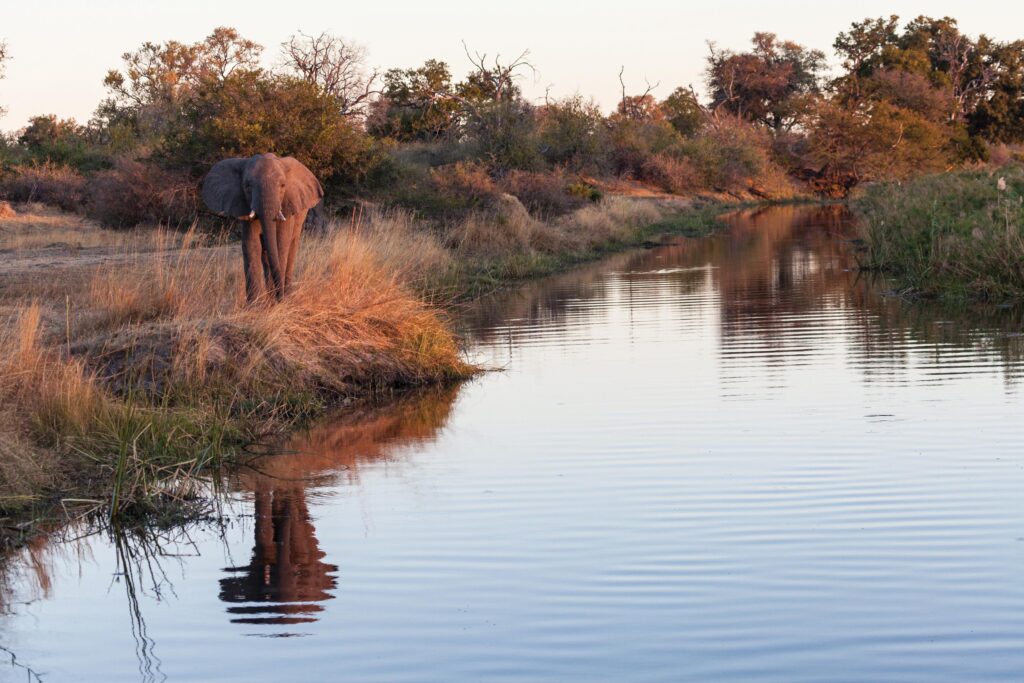
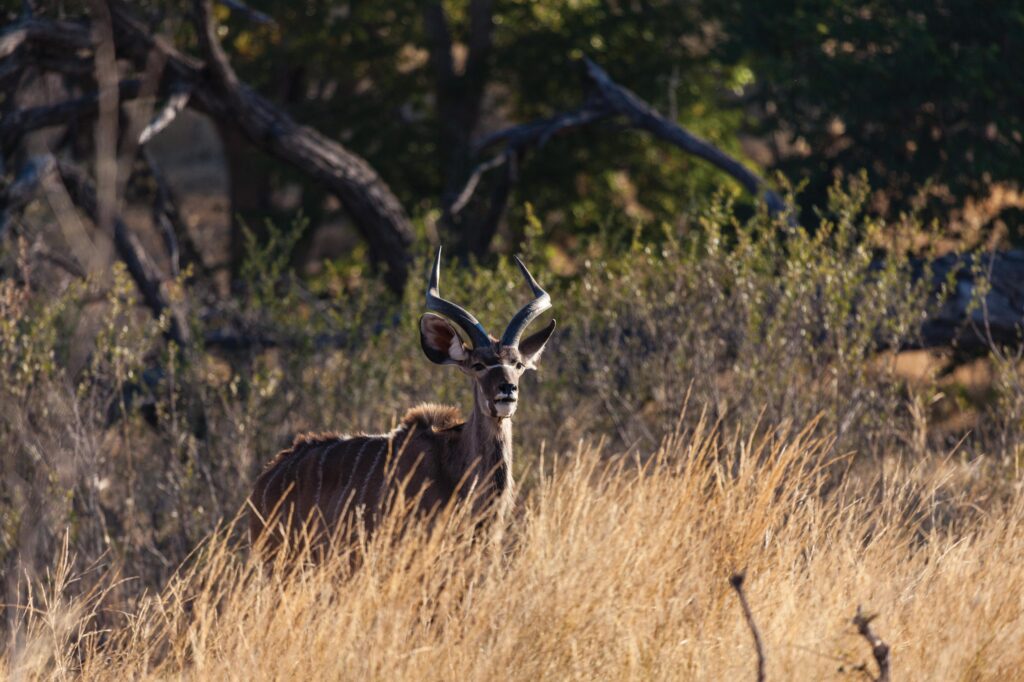
BWABWATA NATIONAL PARK
In 2007 the former Caprivi Game Park, proclaimed in 1968, was incorporated into the 6 100 km² Bwabwata National Park, also including the Kwando or Golden Triangle, and the Buffalo and Mahango (the former Mahango Game Park) core areas. This heralded a new generation of parks in terms of an integrated approach towards park management. Bwabwata was designed not only to protect the environment, but also to accommodate the people living in the park. The central area of the park is zoned for community-based tourism, including trophy hunting, human settlement and development. Cattle movement is controlled to prevent the spread of diseases, and communities living in the park or neighbouring areas are given conditional tourism rights to establish – either on their own or in joint ventures – tourism facilities within the park’s confines. Bwabwata has three distinct areas: the perennial Okavango and Kwando rivers, their riparian vegetation and floodplains characterised by reedbeds, floating grass mats and woodlands with jackalberry, mangosteen, apple-leaf, knob thorn and wild date palm; a parallel system of drainage lines (omiramba) that run west-north-west or east-south- west; and deep windblown Kalahari sands that form dunes between 20 to 60 metres high and support deciduous woodlands dominated by seringa, Zambezi teak, wild teak and several wild raisin and bushwillow species. The park is a sanctuary for 35 large game species – including elephant, buffalo, impala, reedbuck, red lechwe, sitatunga, hippo, giraffe, zebra, wildebeest, Chobe bushbuck, tsessebe, and sable and roan antelope – and numerous small-game species. Predators such as lion, leopard, cheetah and African wild dog also occur in Bwabwata. Because there is no surface water, most species congregate along the Okavango and Kwando riverbanks and at the Malombe and Ndwasa pans in the northeast. Visitors are cautioned that there are crocodiles and hippos in the river. Bwabwata takes its name from a village in the park, and refers to the sound of bubbling water.
POPA GAME PARK
Rushing rapids, melodious birdsong and the rustling leaves of shady, riverine trees are sounds that typify Popa Game Park. Located on the Okavango River opposite Bwabwata National Park, Popa Falls is famous for its lush setting and the sound of the rapids cascading down the rocky descents in the river. Over 400 species of birds have been recorded here. Tigerfish, threespot and green-headed tilapia are just some of the game fish that occur in the Okavango River, making it a popular destination for anglers.
All the parks in the region form part of the 519, 912km² KavangoZambezi (KAZA) Transfrontier Conservation Area, the world’s largest conservation area.
Kavango-Zambezi Transfrontier Conservation Area
In 2011 a treaty was signed at the SADC Summit in Luanda, Angola, by the Presidents of the republics of Angola, Botswana, Namibia, Zambia and Zimbabwe, which formally and legally established the Kavango-Zambezi Transfrontier Conservation Area (KaZa TFCA).
Spanning over 519,912km², and including no less than 36 formally proclaimed national parks, game reserves, forest reserves and game/wildlife management areas across Namibia, Botswana, Zimbabwe, Zambia and Angola, KAZA is the world’s largest conservation area. Namibia has designated Bwabwata National Park, Mudumu National Park, Nkasa Rupara National Park, Khaudum National Park, Mangetti National Park, the Caprivi State Forest and Conservancies, and community forests between and around these protected areas for inclusion in the KaZa TFCA. Over 400 bird species have been recorded in this area. A key objective of a TFCA is to join fragmented wildlife habitats into an interconnected assortment of protected areas and transboundary wildlife corridors to facilitate and enhance the free movement of animals across international boundaries. The KaZa TFCA has the largest contiguous elephant population on the African continent, while it also includes some of the world’s renowned natural features and tourist attractions, such as the Victoria Falls and the Okavango Delta, the largest Ramsar Site in the world.
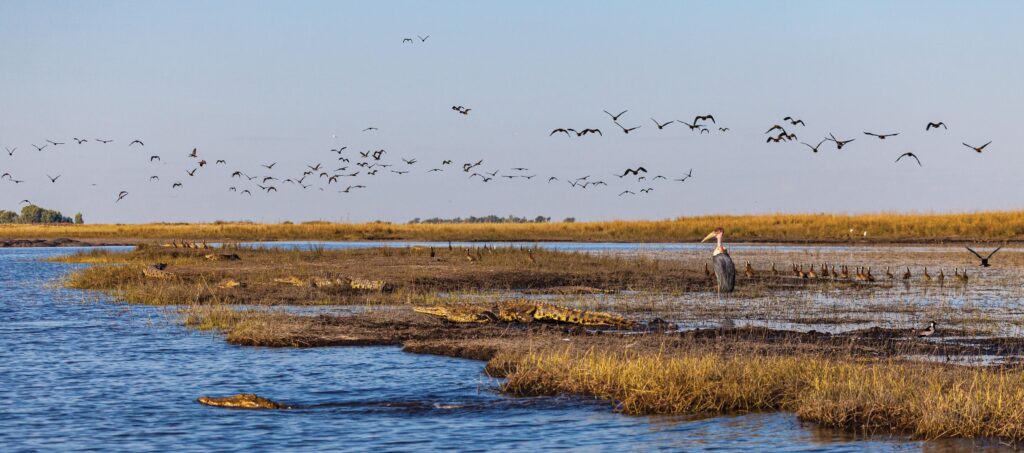
One of the interesting cultures in this region
The people of Kavango
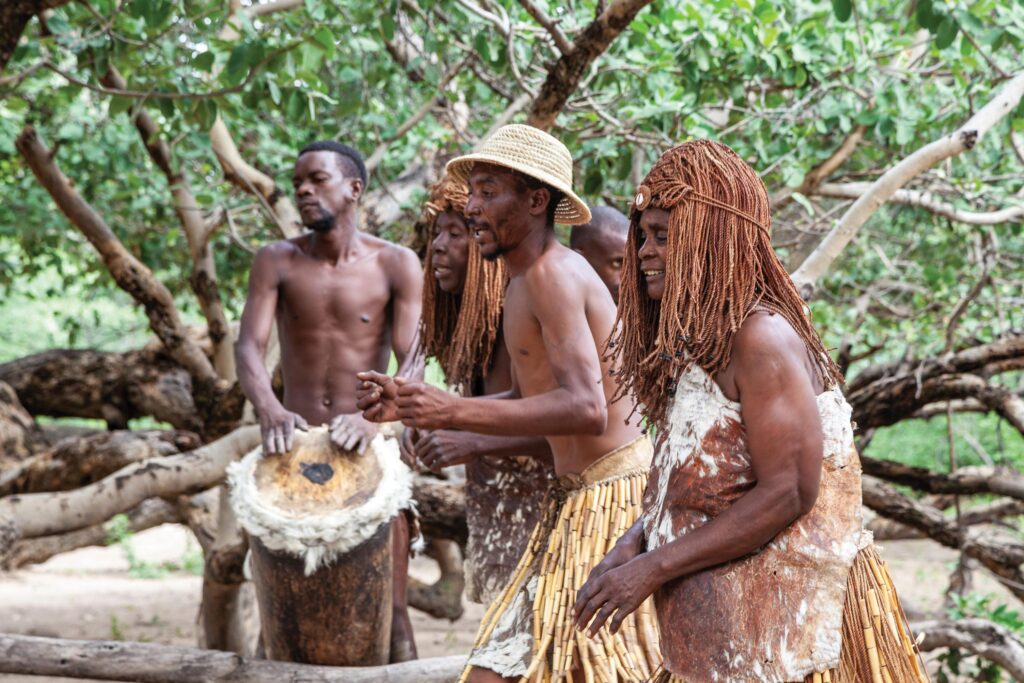
The Okavango River, which forms the border between Namibia and Angola for more than 400 km, is a lifeline to the people of Kavango. It is home to a rich diversity of fish, while a variety of crops are planted on the fertile floodplains. The river is also a highway for the Kavango people who ply the waterway between distant settlements in their watus or mokoros – dugout canoes made from the trunks of Zambezi teak, copalwood and wild teak trees.
The Kavango people, who are closely related to the Aawambo, originated from the Great Lakes region of east Africa. They settled on both sides of the Okavango River after migrating south. Archaeological excavations place the arrival of the earliest settlers in the 17th century.
There are considerable cultural differences between the five Kavango communities. Each community inhabits its own traditional area and is ruled by a traditional chief or chieftainess, assisted by a council of headmen. The Vakangwali and the Vambunza, the two western-most communities, have similar social practices such as preparing young boys for manhood and young girls to take care of a household. The Vashambyu and Vagiriku inhabit the central areas, while the Hambukushu are the eastern-most community.
Rukwangali, the most common language, is spoken by the Vakwangali and Vambunza. Shishambyu is spoken by the Vashambuyu, and Thimbukushu by the Hambukushu.
The Kavango people practice a mixed economy of subsistence crop farming and animal husbandry. More than 60% of the population live within 5 km from the Okavango River which usually reaches its peak in February or March. Once the water has subsided, pearl millet, sorghum and maize are cultivated in the fertile ground. Other crops planted include beans, pumpkins and groundnuts. Dryland crops of cereals, which are dependent on rains, are cultivated further inland, while cattle and goats are also kept.
Fish, an important source of protein, is caught for domestic consumption and as a source of income. Although commercial nets have been used increasingly in recent years, traditional methods such as fish weirs and funnel-shaped baskets are still used.
Much of the rapid population growth in Kavango has been the result of immigration from Angola. Rundu, the administrative centre of the Kavango East Region, is one of the fastest-growing towns in Namibia. Nkurenkuru is the administrative centre of the Kavango West Region.
The Kavango people are expert woodcarvers. A wide variety of household items such as bowls, spoons, decorative items such as masks, furniture, animals and exquisitely carved wooden doors are made from teak. Woodcarvings and furniture can be bought from roadside vendors along the B8 north of the Mururani veterinary control post, the Ncumcara Craft Shop, 35 km south of Rundu, and the Mbangura Woodcarvers’ Cooperative in Rundu. The cooperative also has two craft outlets in Okahandja, 70 km north of Windhoek.
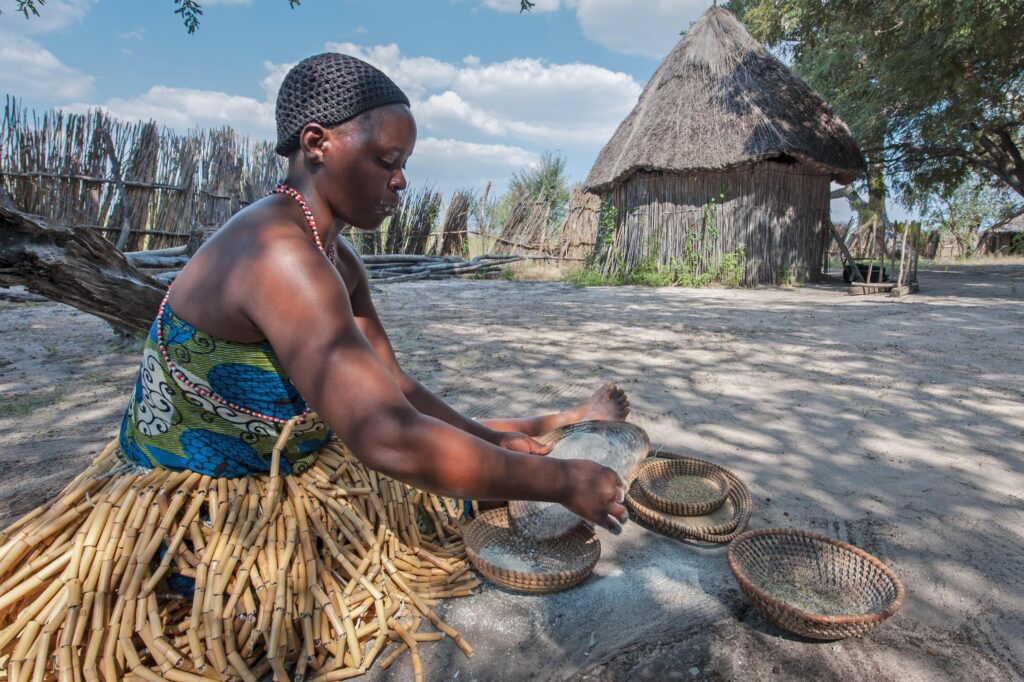
EXPERIENCING KAVANGO CULTURE
The main focus of the Living Museum of the Mbunza, 14 km west of Rundu, is to provide visitors with a detailed insight into the pre-colonial culture of the Vambunza. Fishing and the cultivation of land are an essential part of the museum’s various interactive programmes.
One of the interesting cultures in this region
The people of the Zambezi
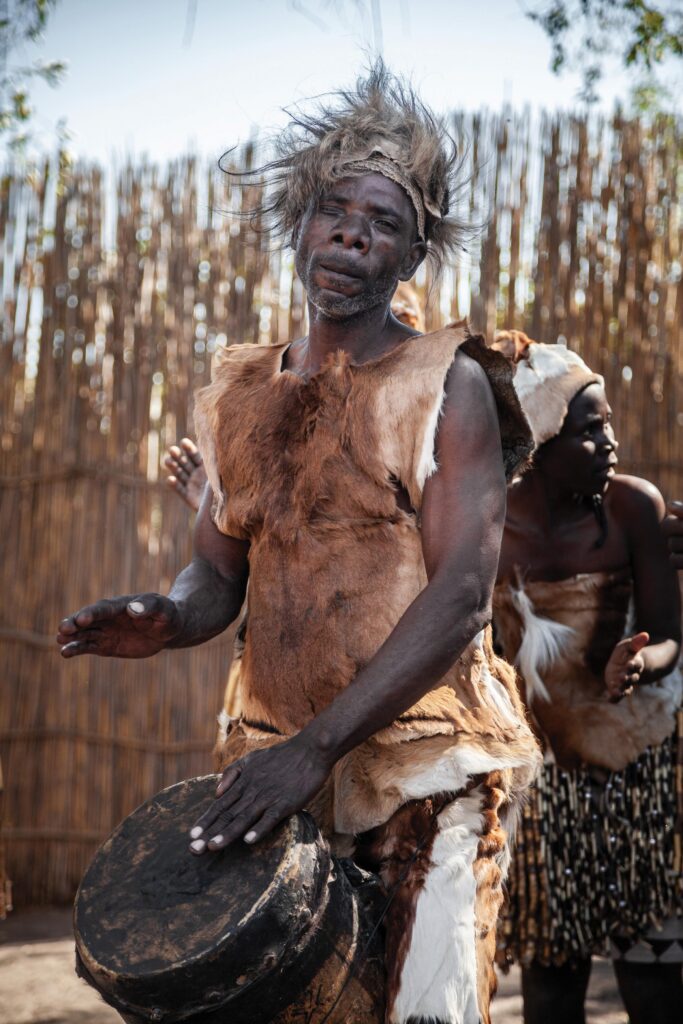
EXPERIENCING ZAMBEZIAN CULTURE
For those keen to gain an insight into the history, culture and way of life of the people of Zambezi there are two traditional villages well worth exploring. The Living Museum of the Mafwe is situated 17 km north of Kongola along the D3502. Programmes include a guided walk through the village, a short bush walk, singing and dancing. With the half-day programme visitors can get an insight and participate in various daily activities.
At the Namushasha Heritage Centre close to the Namushasha River Lodge, 20 km south of Kongola, you can learn more about the cultural diversity of the region’s people. Information on various aspects are provided on information boards, while a variety of demonstrations including singing, dancing and crafts, as well as a performance by a medicine man.
Eastern Zambezi, formerly known as East Caprivi, is a water-rich region which is virtually encircled by rivers – the Kwando River in the west, the Linyanti/Chobe River in the south/southeast and the Zambezi River in the northeast. It is, therefore, not surprising that many people live in close proximity to these rivers, while there is also a high concentration of people in the administrative centre, Katima Mulilo, and along the main roads linking villages in the region.
The early history of the Zambezi Region was characterised by consecutive periods of domination by the Lozi from southwestern Zambia and the Koloko, a South Sotho community who migrated from the present-day Free State in South Africa through Botswana until they reached the Zambezi River.
he Zambezians are composed of a diversity of communities. The Basubia live mainly on the floodplains in the east and the khuta (chief’s council) is situated at Bukalo. The Mafwe consist of a variety of ethnic linguistic groups which includes the Mafwe proper and the Batotela, while the Mayeyi and the Mashi, which originally fell under the Mafwe umbrella, have their own traditional authorities.
Zambezians practice a mixed subsistence economy of crop production and pastoralism. The main crops are maize and millet, while beans, sweet potatoes, groundnuts, pumpkins and melons are also grown. Cattle and goats are also kept. Fishing for domestic use or commercial purposes is another important economic activity.
Bounded by Botswana, Angola and Zambia, a vibrant craft industry has developed in the region. Women in the Zambezi are experts at basket making. Products range from the unique khwe fruit collecting baskets of western Zambezi, once used to carry fruits from the fields, and the open east Zambezi baskets used when harvesting crops and sifting millet and maize flower. Other handicrafts include woodcarvings of domestic implements, animal carvings, reed mats, pottery and necklaces made from mbono and other seeds.
A variety of good quality handicrafts can be bought at the Mashi Tourism Hub, 118 km west of Katima Mulilo, at Kongola.
Local crafts and handiwork from neighbouring countries can be bought at the Zambezi Art Centre near the open market in Katima Mulilo. Handicrafts ranging from wood and sandstone carvings to basketry, domestic implements and fabrics are for sale.
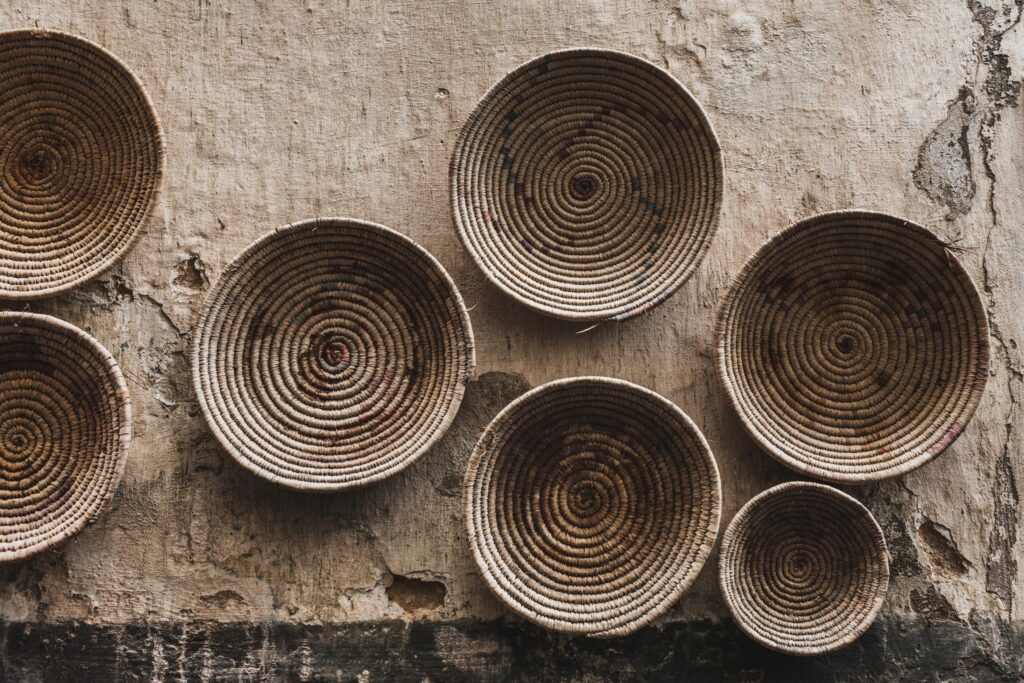
BASKET TRADITIONS
A basket-weaving tradition has survived in Kavango and Zambezi, where the time- honoured baskets still used by women in the mahangu fields for harvesting and winnowing their grain are ideal containers for transporting goods when on foot and for storing the grain in homesteads. The revival of inherent traditional skills, seemingly rendered redundant by modern times, and the acquisition of new skills in marketing and sales, have especially enabled women to create a vibrant and successful craft industry.
Although baskets vary from region to region, they are generally made from the leaves of the makalani palm, Hyphaene petersiana, using the coil technique. Shades of brown, purple and yellow are obtained by boiling the leaves, bark and roots of various shrubs and trees with the strands of prepared palm leaves.
Musemes, the Lozi name for reed floor mats, are made from papyrus by women. Each reed is halved lengthwise and dried in the sun to allow the inner pith to shrink, thus making the reed curl inwards, which makes it more durable. The reeds are then sewn together tightly, using string made from the locally grown mafuu (mother-in-law’s tongue) and narakuku plants.
Top adventures in this region
The lush and vibrant wildernesses of the Zambezi and Kavango regions beckon adventurers with their abundant wildlife and captivating landscapes. If you are planning a trip to Namibia, don’t miss out on these must-do activities.

Activities
GAME DRIVE
Experience the thrill of spotting the Big Five and other wildlife in Bwabwata, Mudumu, or Nkasa Rupara national parks on a game drive. Keep your camera ready for elephants, leopards, lions, and more.
BOAT CRUISE
Enjoy a sunset boat cruise on the Okavango, Zambezi, Kwando, Linyanti, or Chobe River, passing hippos and elephants along the way. Most lodges and camps offer this breathtaking activity.
NATURE WALKS
Embark on guided nature walks to explore the bush up close. Experienced guides will lead you to discover hidden wonders and encounter wildlife.
TIGER FISHING
Try tiger fishing in the intricate waterways. Lodges promote catch-and-release policies and offer guidance on the best fishing spots. The Zambezi and Okavango rivers in northeastern Namibia are home to no less than 76 fish species, including several fine angling species. Heading the list is the rapacious tiger fish, while bream, three-spot tilapia, nembwe and pink happy also rank high on the catch list.
BIRD WATCHING
The northeast is a bird watching paradise, with species like Slaty Egret, Hartlaub’s Babbler, and African Fish Eagle. Early morning and late afternoon are ideal for bird watching.
Museums
- In Katima Mulilo the small Zambezi Museum tells the interesting story of the journey of early missionaries in the region and the pre- colonial Kololo invasion.
- The Sambyu Museum, 30 km from Rundu, is an art and crafts facility showcasing mainly woodcarvings and traditional crafts from the Kavango Region and southern Angola.
Accommodation
NORTHEAST KAVANGO & ZAMBEZI
The lush northeastern wetlands region of Namibia – explore its parks, rivers and wildlife.
- Popa Falls Resort
- Caprivi Mutoya Lodge
- Taranga Safari Lodge
- Wild Waters Group
4a. Nkasa Lupala Tented Lodge
4b. Jackalberry Tented Lodge
4c. Serondela Lodge
4d. Rupara Rest Camp - African Monarch Lodges
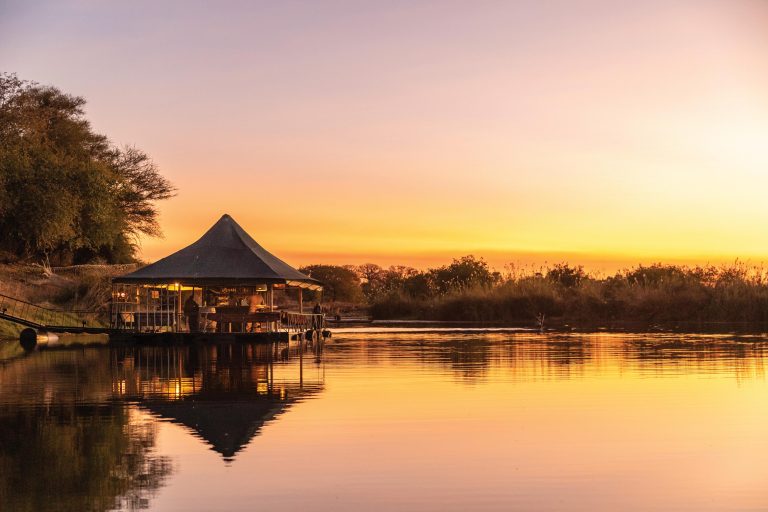
Taranga Safari Lodge
Taranga Safari Lodge Taranga Safari Lodge is one of very few luxury bush lodges in the Rundu-Kavango region. With 2 Deluxe and 8 Classic Luxury open-fronted tented cottages, situated on the riverbank among tall trees and a green campsite, guests are offered ample opportunity to take in the sights and sounds of the African bush
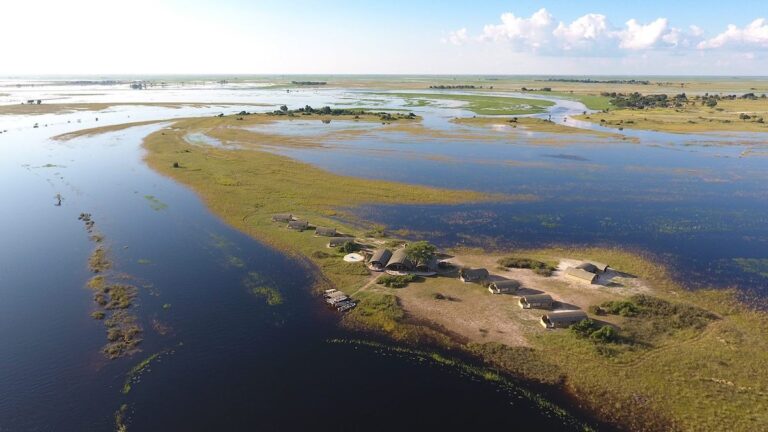
Serondela Lodge
Serondela Lodge Serondela Lodge is located on the Namibian side of the Chobe River, precisely in front of the famous sighting spot in Chobe NP called Serondela. With only 8 rooms, the guests at Serondela will have a dedicated service with a smile. The free boat transfer from Kasane, situated 17 km away, is in
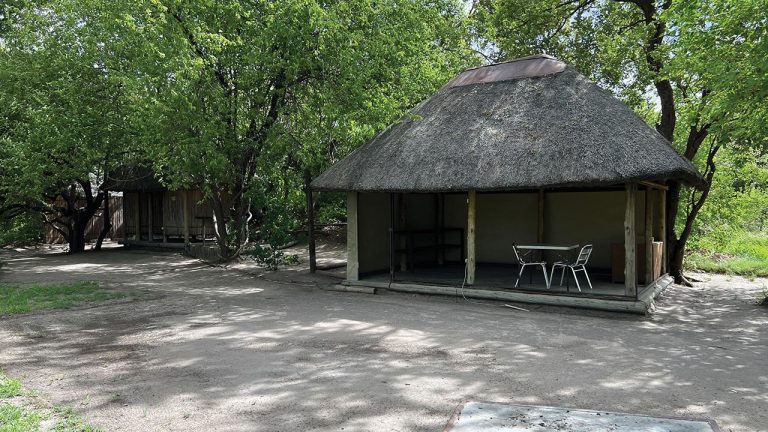
Rupara Rest Camp
Rupara Rest Camp Situates along one of the seasonal channels of the Kwando-Linyanti river system on the southern boundary of the Wuparo Conservancy, Rupara Rest Camp is perfectly situated to explore Nkasa Rupara National Park. It offers 3 private camping sites, 4 standard sites and 23 Self-catering units that are ideal for groups and families
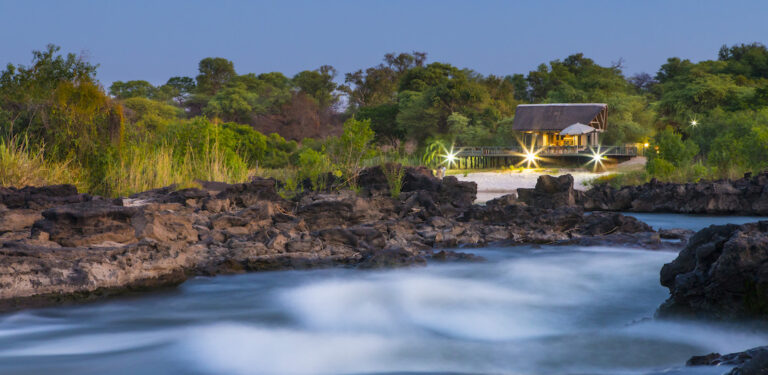
Popa Falls Resort
Popa Falls Resort With its perennial river, magnificent indigenous riverine forests, expansive floodplains and reed-lined channels, Popa Falls Resort is the ideal destination from which to explore Bwabwata National Park, comprising the former Caprivi, Kwando, Buffalo and Mahango core areas. Over 450 bird species and a wide variety of wildlife species – including elephant, hippo,
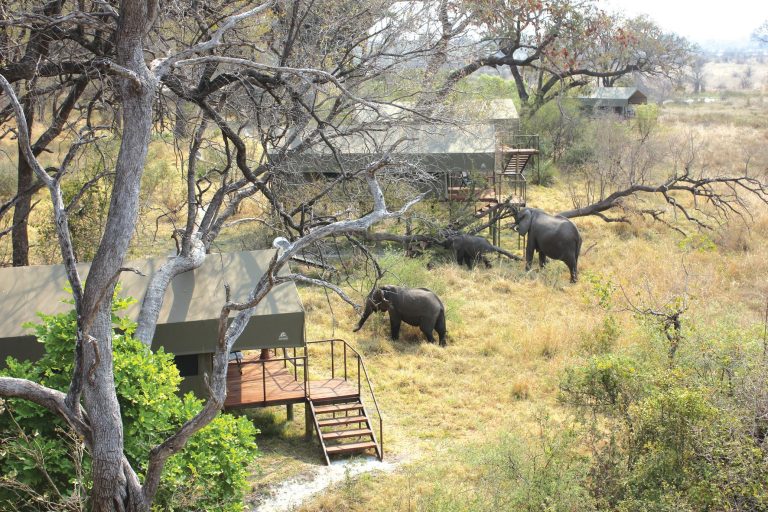
Nkasa Lupala Tented Lodge
Nkasa Lupala Tented Lodge Located on the banks of one of the many channels in the Kwando- Linyanti river system is Nkasa Lupala Tented Lodge. This unique Namibian wetland paradise in eastern Zambezi was proclaimed as Mamili National Park in 1990 and recently renamed Nkasa Rupara NP. The Lodge offers ten luxury tents with en-suite
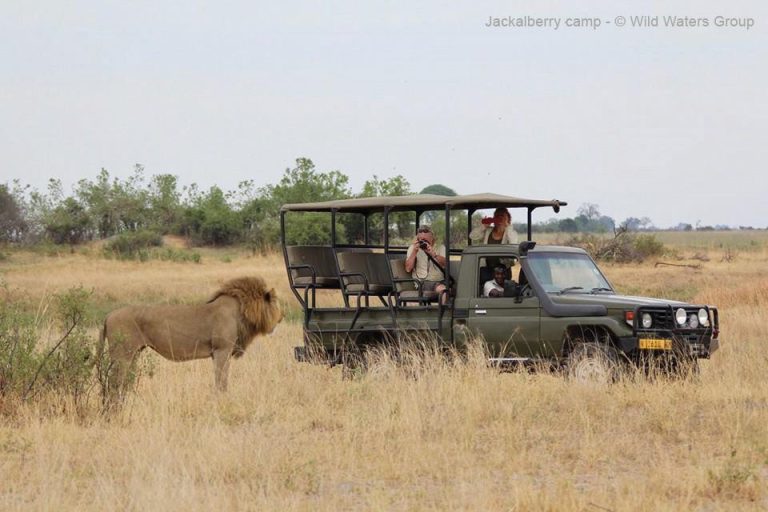
Jackalberry Tented Camp
Jackalberry Tented Camp Jackalberry Tented Camp is inside Nkasa Rupara National Park. The ONLY 4 luxury tents are situated close to the banks of the Linyanti River and the fact that there is no fence allows large mammals and other animals to roam freely in the surroundings and to be sighted from the rooms. Jackalberry
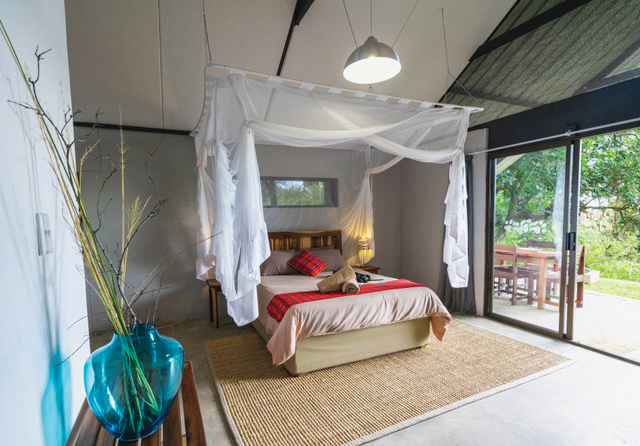
Caprivi Mutoya Lodge
Caprivi Mutoya Lodge Immerse yourself in a variety of land and water activities, whether you’re an avid angler seeking the elusive Tigerfish, a birdwatcher yearning to spot the African Fish Eagle in action, wanting to soak in the local culture by visiting a nearby village, or just relaxing with a massage in a serene setting,
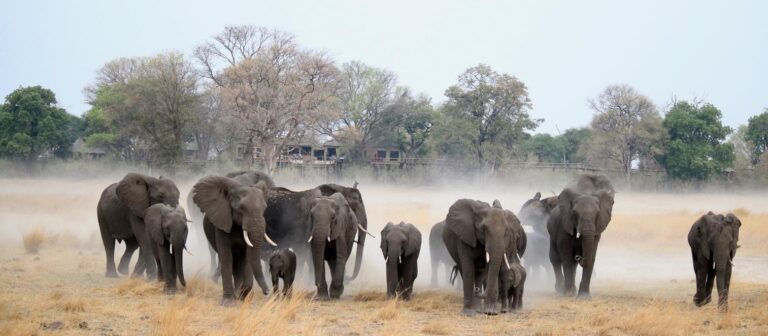
African Monarch Lodges
African Monarch Lodges African Monarch Lodges includes Nambwa Tented Lodge and Kazile Island Lodge, a collection which is owner-run and located in Bwabwata National Park in the Zambezi Region of Namibia, in the heart of KAZA, the World’s Largest Wildlife Conservation Area. Visit African Monarch Lodges Nambwa Tented Lodge Nambwa Tented Lodge is nestled high
Community Campsites in this region
A community campsite is a type of camping facility managed and operated by local communities, often in collaboration with conservation organizations or tourism bodies. These campsites are designed to offer tourists a more immersive and culturally enriching experience, while also providing economic benefits to the locals.
- Mbamba Campsite has reed-lined lapas situated on the banks of the Shamangwe tributary to the Okavango River.
- White Sands – N//goabaca Campsite is situated next to Popa Falls, a series of rapids in the Okavango River.
- Chobe Community Campsite is owned and managed by the local conservancy and receives management support from the nearby lodge Chobe Camp.
- Situated in Bwabwata National Park is the Nambwa Campsite on the banks of the Kwando River.
- Salambala Campsite can be found in mopane woodland next to a small pan and waterhole.
- Mafwe Campsite, another community campsite managed by the Living Culture Foundation, overlooks the Kwando River.
- Treesleeper Camp is surrounded by tamboti, leadwood and buffalo-thorn woodland, with wooden decks built into the trees for optimal viewing.
- Near Nkasa Rupara National Park is the Wuparo Campsite, each site with its own reed and thatch ablution facility.

